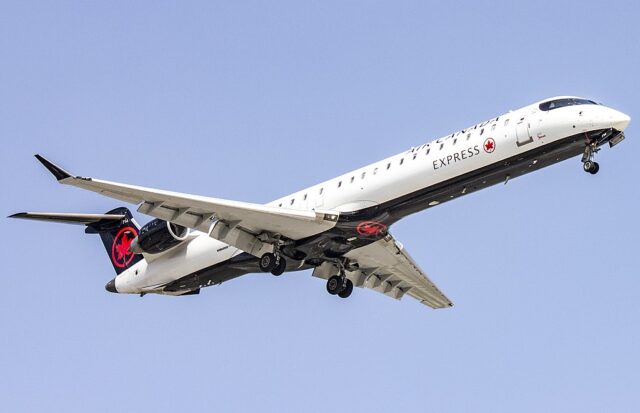Flight emissions leaderboard: Budget airlines beat full-service rivals in Cirium’s 2024 rankings

July 2, 2025

Aviation analytics firm Cirium has released a new first-of-its kind tool to track and analyse flight emissions. Unlike other carbon calculators, Cirium’s tool tracks actual aircraft movements, and accounts for things like aircraft type, age, configuration and operational behaviour.
Measurements are taken in intervals as short as seven seconds, allowing the tool to present granular and transparent detail on emissions, allowing for more accurate estimates than traditional models.
Powered by the company’s EmeraldSky platform, the Cirium model promises to bring a new level of transparency to airlines and stakeholders. Airlines can see how their performance stacks up against peers, where they’ve improved year-on-year, and how route and equipment decisions are affecting emissions.
“For the first time, airlines can compare their emissions performance using a consistent, verified methodology,” said Jeremy Bowen, CEO at Cirium. “EmeraldSky provides the industry-standard benchmark that enables fair comparison and meaningful progress tracking.”
The data from EmeraldSky has been independently assured under ISAE 3000 standards by PwC, adding a layer of trust and credibility that is rare in other carbon calculators.
Low cost carriers lead in low flight emissions
To celebrate the launch of the tool, Cirium released its first Flight Emissions Review, which ranks the top 20 airlines globally based on flight emissions.
The most efficient airline, as defined by the tool, is Hungary’s WIzz Air. The budget airline was calculated to produce 53.9g of CO2 per available seat kilometre (ASK) in 2024, exactly the same as 2023 despite operating 4% more flights.
Coming in second was the USA’s Frontier Airlines at 54.4g of CO2 per ASK, down 1% compared to 2023 despite the airline operating 13.8% more flights.

Rounding out the top three is Türkiye’s Pegasus, another LCC, at 57.1g of CO2 per ASK. Pegasus’ emissions have declined 2.5% since 2023, even thought it has operated almost 10% more flights over the year.
The full top 10 list shows just how efficient low cost carriers are, and doesn’t see a full service airline appear once.
- 1st: Wizz Air – 53.9g CO2/ASK
- 2nd: Frontier Airlines – 54.4g CO2/ASK
- 3rd: Pegasus – 57.1g CO2/ASK
- 4th: Volaris – 57.9g CO2/ASK
- 5th: IndiGo – 58.2g CO2/ASK
- 6th: Jetstar – 58.4g CO2/ASK
- 7th: Spirit Airlines – 58.4g CO2/ASK
- 8th: Scoot – 58.7g CO2/ASK
- 9th: SunExpress – 59.4g CO2/ASK
- 10th: Air India Express – 60.5g CO2/ASK
For fair comparison, Cirium also released the emissions of the largest airlines in the world by ASK. Of these, budget airline Ryanair was the most efficient, followed by Southwest and Delta. The full list is as follows:
- 1st: Ryanair – 63g CO2/ASK
- 2nd: Southwest Airlines – 68.9g CO2/ASK
- 3rd: Delta Air Lines – 74.4g CO2/ASK
- 4th: American Airlines – 74.6g CO2/ASK
- 5th: United Airlines – 75.4g CO2/ASK
- 6th: Turkish Airlines – 76.9g CO2/ASK
- 7th: China Southern Airlines – 78.2g CO2/ASK
- 8th: Qatar Airways – 79.7g CO2/ASK
- 9th: Air China – 83.3g CO2/ASK
- 10th: Emirates – 84.9g CO2/ASK
Why do low cost carriers have the lowest flight emissions?
Low cost airlines tend to have the lowest CO2 emissions thanks to their efficiency-focussed business models.
LCCs configure their aircraft to carry more passengers, so where a Wizz Air A321neo seats 239 passengers, a legacy carrier will often offer different cabin classes and a much more lightly loaded capacity. United Airlines, for example, configures its A321neos with just 200 seats.
As emissions are measured in grammes of CO2 per available seat kilometre, the more seats on board, the lower the ASK emissions will be.

Low-cost carriers are also highly engaged in operating young, fuel efficient fleets. Frontier, for example, has replaced almost all of its A320ceos with neo variants, saving up to 20% of fuel burn thanks to new engines and technology.
The typical LCC model involves operating point-to-point with quick turnarounds, reducing idle time and increasing the ASK. Their no-frills approach means heavy business class seats are removed from the equation, and with less catering equipment on board (plus lightly packed passengers looking to avoid expensive checked bags) means their operation is lightweight and efficient.
Of course, this doesn’t mean low cost carriers emit less total CO2 than other airlines, but on a per-seat, per-kilometre basis, they’re some of the cleanest and most efficient operations in commercial aerospace.
Cirium plans to build on this tool with additional metrics in the future, including the integration of sustainable aviation fuel (SAF) use and non-CO₂ effects. As airlines push for net zero by 2050, this new level of validated transparency will be a crucial tool for monitoring progress.
















